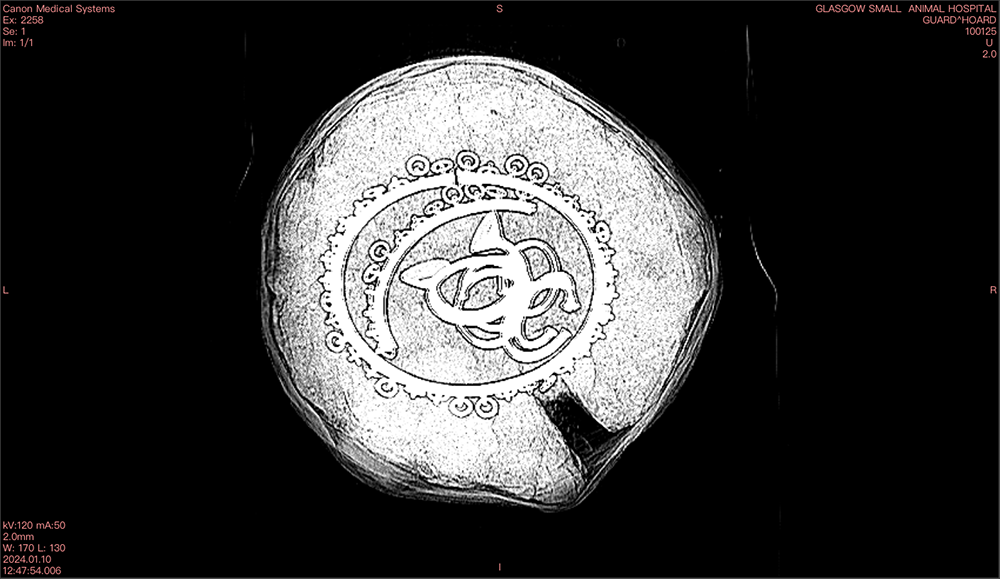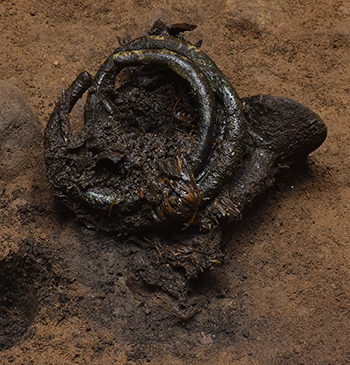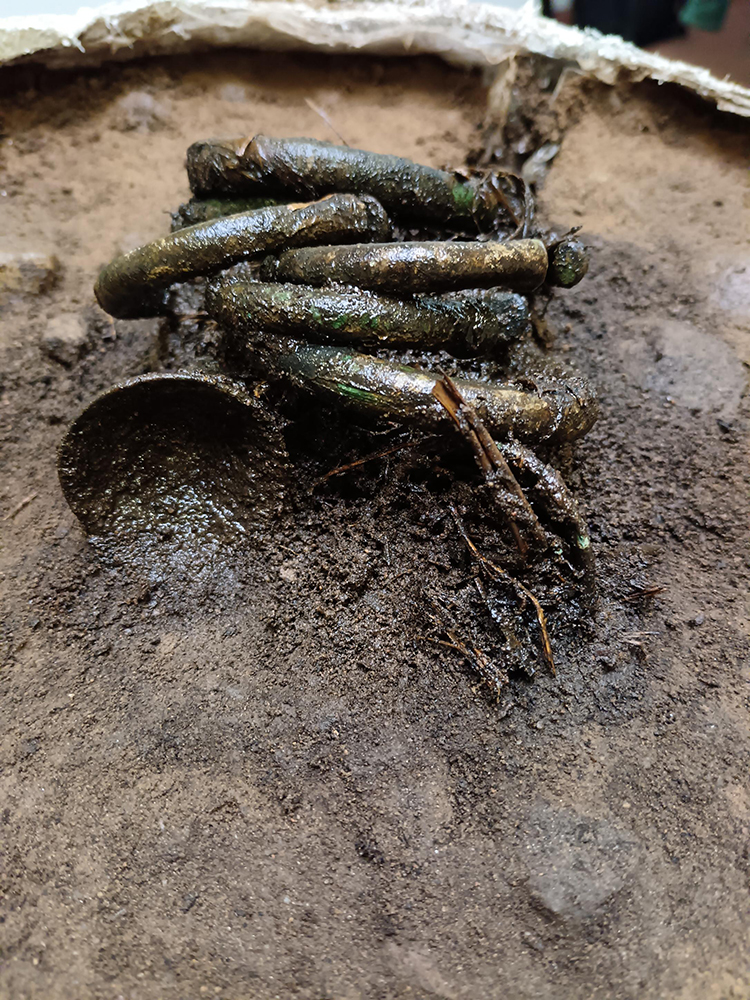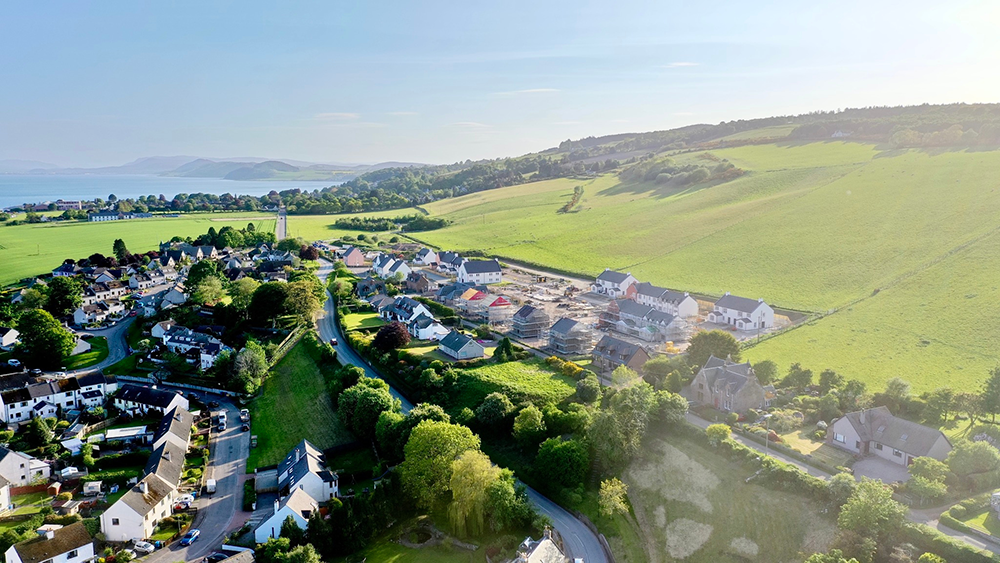
Recent laboratory investigations of a Bronze Age hoard, by GUARD Archaeology, have revealed rare organic plant remains intertwined with nine bronze bracelets and necklaces buried sometime around 1000 BC.
The Bronze Age hoard was discovered during excavations conducted prior to the development of new 3 and 4 bed homes by local developer, Pat Munro Homes (a division of Pat Munro (Alness) Ltd) at Greenside in Rosemarkie, in Highland Scotland.

What makes the hoard especially significant is that it was not an isolated find with little context to explain it, but was discovered within the middle of a prehistoric settlement, a Bronze Age village comprising at least six roundhouses and also a Bronze Age cist grave. Altogether GUARD Archaeology’s analysis of these archaeological remains will shed light upon the lives, beliefs and deaths of Bronze Age highlanders. This will add to what GUARD Archaeologists have gleaned from another Bronze Age hoard they excavated in Carnoustie on the east coast of Scotland, also found within a Bronze Age village, which may altogether reveal aspects of Bronze Age culture apparent across Scotland.
The laboratory excavation conducted by a team of GUARD Archaeologists alongside Conservator, Will Murray, from the Scottish Conservation Studio revealed nine bronze artefacts, including one complete neck ring, one partial neck ring, six penannular bracelets and one cup-ended penannular bracelet. Remains of plant/organic material was also recovered, comprising fibrous cords tied and knotted around some of the bronze objects.

intertwined with the artefacts
“The recovery of the artefacts was successfully carried out under the controlled conditions necessary to preserve these highly significant objects, particularly the very delicate organic cords that tether some of the objects together,” said Rachel Buckley, who led the laboratory excavation. “Where bracelets were held together with organic material, these were recovered as a group to allow further detailed study. While there are other examples of hoards where it has been postulated that items were bound together due to their positioning, the vegetation in the Rosemarkie hoard has survived for approximately 3000 years, proving that these artefacts were held together.”
The survival of the organics is likely in part due to the anti-microbial properties of copper (in the bronze), where the corrosion products from the copper adhere to the organics and preserve them.

cup-ended penannular bracelet cup end
Over the next few months, the team of specialists brought together by GUARD Archaeology will be examining the various strands of archaeological evidence that may explain why the hoard was buried here.
“That the hoard was buried under a single homogenous fill within a shallow pit with little extra room for anything other than what was found within, indicates that this was no accidental loss,” said Iraia Arabaolaza, who is managing GUARD Archaeology’s analyses. “It would seem that the shallow pit was dug to the required length and depth to accommodate the items, before then being quickly backfilled. It may be that it was intended as temporary storage with the intention of recovering the hoard at some stage. The evidence from the surrounding settlement may reveal whether it was not just the hoard that was abandoned but the settlement as well.”

The archaeological work was funded by Pat Munro (Alness) Ltd and was required as a condition of planning consent by Highland Council who are advised on archaeological matters by the Highland Council Historic Environment Team, who considered there to be a potential for hitherto unknown archaeology to be buried at the site. Hamish Little, Senior Manager, Pat Munro Homes said, ‘It’s been a great experience for the team at Pat Munro Homes to work with the archaeologists at our development at Greenside, Rosemarkie and also be part of the team that uncovered the Bronze Age artefacts. We are hoping to work together with the archaeologists, and other partners in the coming months to involve the local secondary school, Fortrose Academy in learning more about its historical significance and getting pupils involved in helping to design a permanent feature on/near the site that will tell the story and can be shared with the local community and visitors to the area.’
